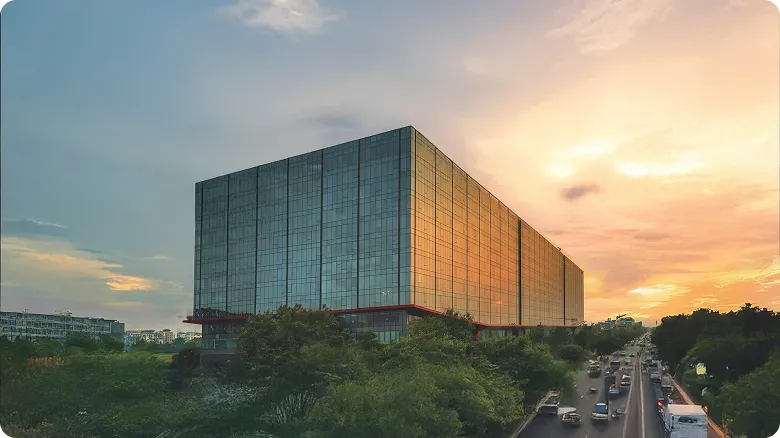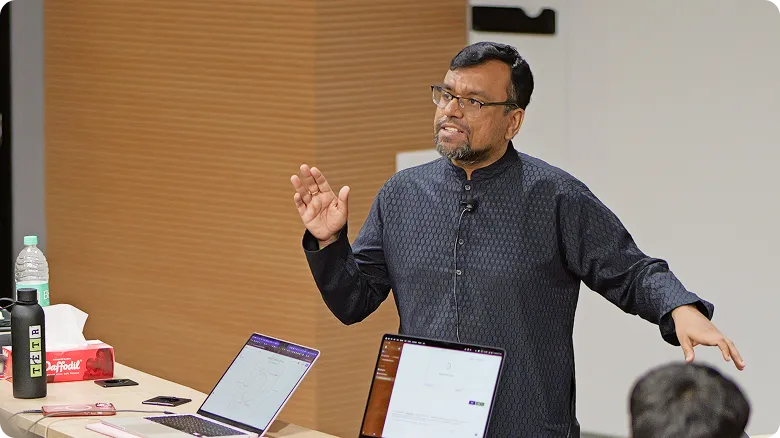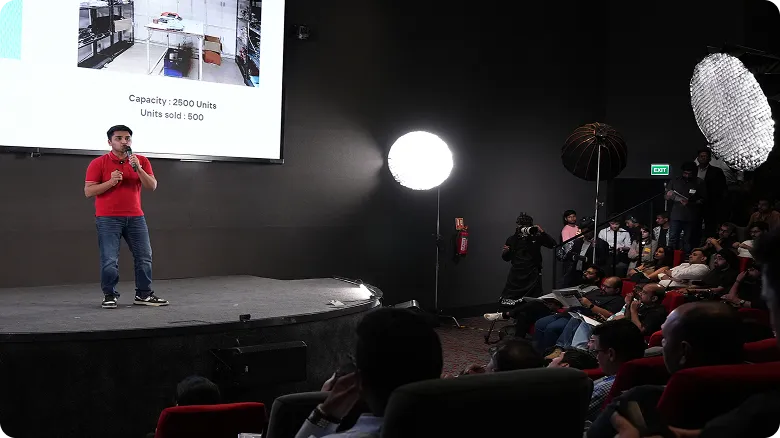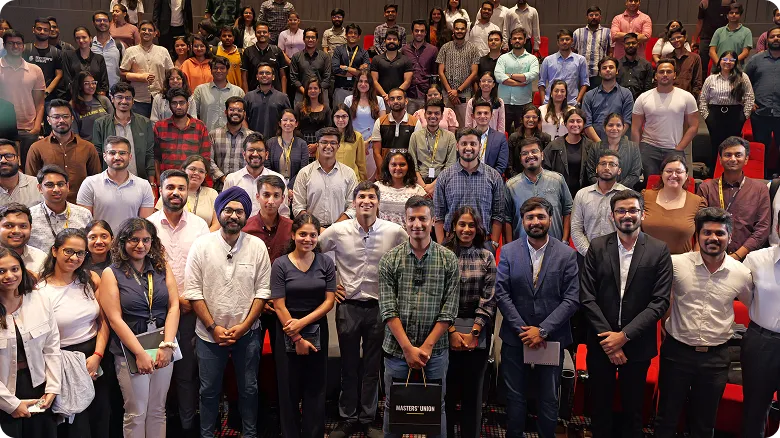Apply to the Shark Tank S5 Campus Special (Open to All Students)
Apply NowUndergraduate
Undergraduate (Global)
Postgraduate
Executive
Family Business
Careers
Innovations
Faculty
MU Ventures
Student Life
Jobs
Become a Master
events
For Companies
Blog
Business
Tesla’s Launch and Marketing Strategy: A Case Study for MBA Aspirants
March 11, 2025

The long-awaited Tesla entry in India is more than just an automotive headline. It is a live case study for business students, particularly MBA aspirants, who want to understand how global strategy, policy, and consumer economics interact in emerging markets.
At Masters’ Union, case-based learning is a cornerstone of the curriculum. The Tesla in India launch serves as a timely example of how market opportunities and regulatory hurdles shape multinational expansion. It also highlights the job opportunities after MBA in sectors influenced by technology, sustainability, and global trade.
Why Tesla Launch Case in India Matters for MBA Students
India is now the third-largest car market in the world, with a rapidly expanding middle class and growing demand for premium mobility solutions. With this, Tesla’s entry in the Indian market has made a remarkable stand in the EV ecosystem. For MBA students, this presents a chance to examine how a global brand adapts to local challenges while aligning with government policies.
Tesla’s move is not only about cars—it is about careers after MBA in India. From consulting and corporate strategy to finance and HR, students can map how this story translates into MBA job opportunities across industries.
Implications for students:
-
Global companies must adapt to local market realities
-
India’s EV adoption is a career hotspot for future MBAs
-
Multinational entry strategies connect directly to consulting and finance careers
Tesla’s Strategic Rationale for Entering India
The Tesla entry in India is not sudden. It stems from three strategic rationales:
Expanding into a Global Growth Market
India’s car market ranks just behind China and the U.S. With rising disposable incomes and increased EV awareness, India offers Tesla scale and growth.
Leveraging Government Push for EV Adoption in India
The FAME India scheme provides subsidies for EV adoption in India. Several states offer tax breaks for local manufacturing, making the business case stronger.
Manufacturing and Export Potential
Tesla is reportedly considering an Indian Gigafactory. This would reduce costs for Indian consumers and make India a hub for exports to Southeast Asia.
Building on a Growing EV Ecosystem
Private and public players are expanding EV infrastructure. If Tesla introduces its Supercharger network, it could accelerate EV adoption further.
MBA lens:
-
Market entry decisions require balancing demand, cost structures, and policy incentives
-
MBA finance job opportunities include evaluating such capital-intensive moves
-
Consulting graduates may advise on localisation and policy navigation
India’s EV Push: Opportunities for Global Players
The government is serious about electrification. By 2030, it targets 30% EV penetration for private cars. This aligns with sustainability goals and creates space for global automakers, including Tesla.
-
Consumer Demand: Millennials and Gen Z in India are open to premium Tesla cars in India and other EVs
-
Policy Incentives: Subsidies under the FAME scheme, state incentives, and charging infrastructure projects
-
Private Partnerships: Collaborations with energy firms and startups to boost EV adoption
For MBA students:
-
Understand how government incentives shape corporate decisions
-
Recognise the MBA finance job opportunities in infrastructure funding
-
Explore how consulting roles drive public-private collaboration.
Challenges Tesla Must Overcome in India
While opportunities exist, challenges cannot be ignored.
High Import Duties
India imposes up to 100% duty on imported vehicles, making Tesla cars in India unaffordable for many buyers.
Infrastructure Gaps
EV supply chains are developing, especially in battery production. Without localisation, costs remain high.
Price Sensitivity and Competition
Brands like Tata Motors, Mahindra, and MG already offer lower-priced EVs. Tesla EV models must adapt with a cost-effective option.
Policy and Regulatory Complexity
Tesla has lobbied for lower duties, but the government insists on local production. Negotiations will continue.
MBA context:
-
Strategy graduates can study pricing vs. localisation trade-offs
-
MBA HR jobs emerge as Tesla scales manufacturing, requiring people management
-
Operations specialists gain exposure to supply chain development
Tesla’s Likely India Strategy
To succeed, Tesla may follow a three-pronged plan.
Local Production
A Gigafactory in India could make cars more affordable while positioning India as an export hub.
India-Specific Model
Developing a cost-effective Tesla EV for Indian roads would help Tesla compete with Tata and Mahindra.
Charging Infrastructure Expansion
Partnerships with energy firms and governments could accelerate EV adoption in India.
Student takeaway:
-
Localisation is central to success in emerging markets
-
MBA graduates can enter consulting, strategy, and operations roles tied to such expansions
How Tesla’s India Story Connects to MBA Careers
The Tesla in India launch illustrates what are the job opportunities after MBA across functions:
-
Consulting: Advising Tesla or competitors on entry strategy
-
Finance: Raising capital, evaluating ROI, and managing supply chain investments
-
Operations: Setting up production plants and logistics networks
-
HR: Leading talent acquisition for manufacturing
-
Product Management: Designing India-specific EVs
At Masters’ Union, students study live cases like this to connect theory to practice. Placement data shows how such industries translate into careers:
-
MBA salary in India at Masters’ Union averages ₹28.5 LPA
-
Highest MBA salary in India (2024) touched ₹61.8 LPA
-
MBA in finance salary in India averaged ₹33 LPA, with roles in consulting, VC, and investment banks in India.
Learning from Tesla’s Global Playbook
Tesla’s China entry shows the importance of localisation—factories, supply chain partnerships, and tailored products. For India, lessons include:
-
Adapt pricing to local affordability
-
Build a supply chain ecosystem, not just import vehicles
-
Collaborate with state governments to ease entry
MBA insight:
-
Global strategy must adapt to each market’s realities
-
Finance graduates may work with investment banks in India on funding such expansions
MBA Job Opportunities Emerging from the EV Industry
The EV industry is creating roles across multiple MBA tracks:
-
Finance: Valuations, project financing, and partnerships
-
Consulting: Market entry and competitive positioning
-
HR: Talent development in manufacturing plants
-
Strategy: Corporate expansion plans
-
Product: User-centric EV innovation
For students asking about careers after MBA in India, the EV sector demonstrates how global disruptions create the highest paying jobs after MBA in India.
Ending Thoughts Right from Masters’ Union’s Classroom Discussion
Professors often leave students with questions to test their application of strategy:
-
Would you push for an India-specific low-cost Tesla EV?
-
Would you focus on lobbying for lower duties or commit to local manufacturing?
-
How would you build partnerships to accelerate charging networks?
This case forces students to think like CEOs—balancing regulation, competition, and strategy.
FAQs
1. What are the job opportunities after MBA linked to Tesla’s entry?
Consulting, finance, operations, HR, and product roles in the EV ecosystem.
2. What is the MBA graduate salary in India for such roles?
At Masters’ Union 2024, average salary was ₹28.5 LPA; finance and strategy roles often exceed ₹30 LPA.
3. What are the job opportunities after MBA in finance in this sector?
Evaluating investments, supply chain financing, and advising on fundraising for EV projects.
4. How does the Tesla entry in India impact MBA HR jobs?
HR leaders will be needed for workforce management in manufacturing and technology roles.
5. What are the highest paying jobs after MBA in India in 2025?
Consulting, investment banking, product management, and data-driven strategy roles remain top-paying.














